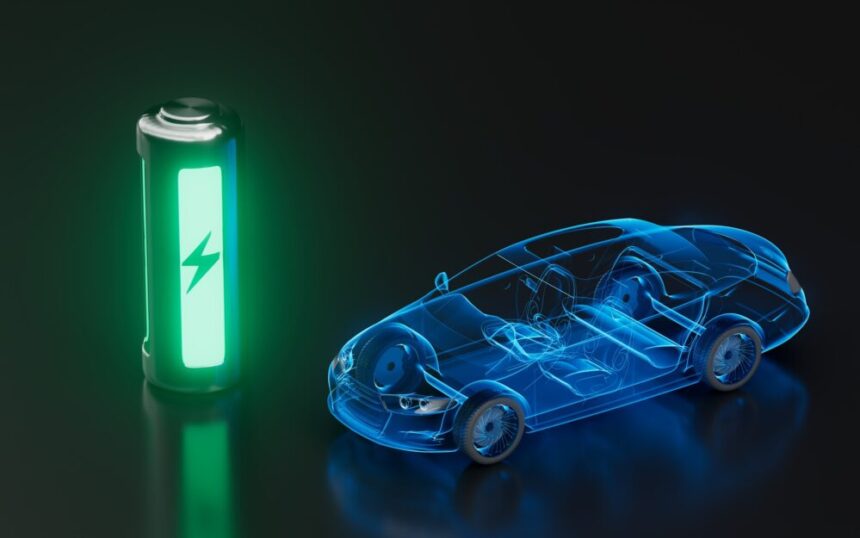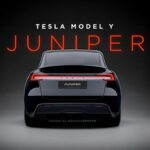The Nissan Leaf was one of the first mass-market electric vehicles (EVs) to hit the market, with a relatively small battery capacity compared to newer models. However, as technology has advanced and consumer demand for longer ranges has increased, carmakers have been pushing the boundaries of battery size to meet these needs.
In a recent webinar hosted by Autovista Group, experts discussed the economies of larger batteries in EVs. Dr Christof Engelskirchen, chief economist at Autovista Group, Dr Anne Lange, director of research and innovation at Autovista Group, Christoph Ruhland, director of business development at Autovista Group, and Christian Schneider, director of content at EV Volumes, all weighed in on the topic.
One of the key questions addressed in the webinar was whether bigger batteries are better for EVs. The experts pointed out that as battery sizes have increased, so too have the average driving ranges of EVs. In Germany, for example, the average WLTP range of a BEV increased by 28% between 2021 and 2024, reaching 375km. This has helped to alleviate range anxiety for drivers, but has also highlighted the need for a robust charging infrastructure to support these longer ranges.
Dr. Engelskirchen discussed the cost savings associated with long-range BEVs, comparing models like the Tesla Model Y and Volvo EX30. He found that while long-range versions of these models may cost more upfront, the savings in reduced public charging costs can offset this increase over time.
In terms of the used-car market, Dr. Lange revealed that BEVs with larger battery capacities tend to retain their value better and sell more quickly than those with smaller batteries. This can be attributed to the fact that larger batteries are often found in higher-end models with more features and better trims.
The experts also discussed the role of plug-in hybrids (PHEVs) in the transition to battery-electric vehicles. While PHEVs have seen an increase in battery capacity and global demand, some markets, like France, are seeing a decline in PHEV sales as more consumers opt for BEVs. Germany, on the other hand, saw a rapid drop in PHEV sales after government incentives were withdrawn.
Overall, the experts agreed that carmakers are on the right track in pushing for larger battery sizes in EVs, with upcoming models like the VinFast VF9 and Denza D9 DM-i PHEV featuring even larger capacities. As technology continues to evolve and consumer demand for longer ranges grows, it seems likely that batteries in EVs will continue to increase in size, driving the industry towards a more sustainable and environmentally friendly future. The electric vehicle (EV) industry has come a long way since the first mass-produced battery electric vehicle (BEV) hit the market in 2010 with a 24kWh battery. Fast forward to today, and upcoming plug-in hybrid electric vehicles (PHEVs) are set to feature batteries almost double that size. The EV landscape has evolved significantly over the past 14 years, with a plethora of BEVs, PHEVs, and new car manufacturers entering the market.
One of the key decisions facing these manufacturers is whether to prioritize larger batteries or optimize performance in their EVs. By focusing on efficiency, OEMs can achieve respectable ranges while delivering cars with enjoyable driving dynamics. This approach also helps to keep costs down, making EVs more accessible to the mass market.
If you found “The economy behind large batteries in electric vehicles – is bigger better?” informative, be sure to sign up for Autovista Group’s upcoming webinar, “Blessing or curse: The impact of EU tariffs on BEVs made in China,” scheduled for 7 November 2024 at 9.30am BST / 10.30am CET. Register now to secure your spot and gain valuable insights into the evolving EV landscape.
For more industry news and insights, visit Autovista Group’s Residual Value Intelligence platform. Stay updated on the latest trends and developments shaping the automotive industry.
With the electrification of vehicles gaining momentum, it’s clear that the future of mobility is electric. As manufacturers continue to innovate and improve EV technology, consumers can expect even more advanced and efficient electric vehicles in the years to come. Stay tuned for the latest updates on the evolving EV market.







